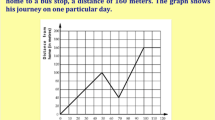Abstract
This paper describes the Electronic Schoolbag, a digital workspace developed at the University of Savoie (France) and analyses its usages. This online environment is dedicated to the educational world: it offers pupils, students, teachers, school staff, or parents, personal and group workspaces in which individual or collaborative activities can take place. The flexibility of this software, allowing synchronous or asynchronous activities, lies in the “participation model”. This model allows groups themselves to describe and organise their activities. The architecture that permits its implementation in the Electronic Schoolbag workspace is described. The study of the practices of the workspace is then presented. This requires different observation methods, according to the different procedures chosen: real practices provided by quantitative methods (analysis of the logs of the actions and questionnaires) and imagined practices provided by qualitative methods (semi-directive interviews). The results obtained from the university users allow us to assess the evolution of the usages for different periods and on different university sites. The observatory also lets us list the main uses of the Electronic Schoolbag for educative communication (collaborative vs. individual, informative vs. communicative).





Similar content being viewed by others
References
Caron B, Carron Th, Chabert Gh, Courtin Ch, Ferraris Ch, Martel Ch, Marty JC, Vignollet L (2004a) A model for CSCL allowing tailorability: implementation in the Electronic Schoolbag Groupware. In: Proceedings of CRIWG, San Carlos, Costa Rica
Caron B, Carron Th, Chabert Ch, Courtin Ch, Ferraris Ch, Martel Ch, Marty JCh, Vignollet L (2004b) L’espace numérique de travail du «cartable électronique», TICE 2004, Compiègne, France
Chabert Ch (2001) Uses of the electronic schoolbag: education technology evaluation, international congress 2001 BOGUES. In: Proceedings of globalism and pluralism, Montréal, Canada, pp 280–295
Chabert Gh (2002) Le cartable électronique expérimenté: un autre regard sur les usages. Proceedings of XIIIème congrès national des Sciences de l’information et de la communication, Marseille, France, pp 147–154
Chambat P (1994) Reprise de la question des usages, in Médias et Nouvelles Technologies, p 49
Chaptal A (2003) L’efficacité des technologies éducatives dans l’enseignement scolaire, Analyse critique des approches française et américaine. L’Harmattan, Savoir et Formation, pp 249–266
Dillenbourg P (1999) What do you mean by collaborative learning? Collaborative learning: cognitive and computational approaches. Elsevier, Oxford, pp 3–19
Ellis C, Wainer J (1994) A conceptual model of groupware. In: Proceedings of ACM CSCW’94 conference on computer-supported cooperative work. Chapel Hill, North Carolina, pp 79–88
Ferraris Ch, Brunier Ph, Martel Ch (2002) Constructing collaborative pedagogical situations in classrooms: a scenario and role based approach. In: Proceedings of computer support for collaborative learning 2002, Boulder, Colorado, USA, 7–11 January 2002
Ferraris Ch, Martel Ch (2000) Regulation in groupware: the example of a collaborative drawing tool for young children. In: Proceedings of CRIWG, Madeira Island, Portugal
Gentil R, Verdon R (2003) Les attitudes des enseignants vis-à-vis des technologies de l’information et de la communication. Evaluation note of Note ‘Direction de l’évaluation et de la prospective’, http://www.education;gouv.fr/stateval <http://www.education;gouv.fr/stateval>
Guillaume M (1997) Où vont les autoroutes de l’information? Descartes et Cie, (Interfaces-économie), Paris, p 92
Kahan J, Koivunen MR, Prud’Hommeaux E, Swick R Annotea (2001) An open RDF infrastructure for shared Web annotations. In: Proceedings of WWW10 international conference, Hong Kong, China
Martel Ch (1998) La modélisation des activités conjointes. Rôles, places et positions des participants. PhD Thesis, University of Savoie
Michel Ch (2002) Caractérisation d’usages et personnalisation d’un portail pédagogique. Etat de l’art et expérimentation de différentes méthodes d’analyse du Web Usage Mining. In Proceedings of 7th colloque of AIM «Affaire Electronique et société du savoir: opportunités et défis», Hammamet, Tunisie
Peraya D (2000) «le cyberespace: un dispositif de communication et de formation médiatisée», Cyberespace et formation ouvertes: un levier d’autoformation? Bruxelles, Deboeck
Rastier F (1989) Sens et textualité. Hachette, Paris
Scrivasta J, Cooley R, Deshpande Mukund M, Tan PN (2002) Web usage mining: discovery and application of usage patterns from web data. In: Proceedings of SIGKDD explorations, vol 1, Issue 2, ACM
Stahl G (2002) Groupware goes to school. In: Proceedings of CRIWG’2002, 6th international workshop on groupware, number 2240 in LNCS, La Serena, Chili
Tolone WJ (1996) Introspect: a meta-level specification framework for dynamic evolvable collaboration support. PhD Thesis, University of Illinois
Vygotsky L (1978) Mind in society: the development of higher psychological processes. Harward University Press, Cambridge
Author information
Authors and Affiliations
Corresponding author
Rights and permissions
About this article
Cite this article
Chabert, G., Marty, J., Caron, B. et al. The Electronic Schoolbag, a CSCW workspace: presentation and evaluation. AI & Soc 20, 403–419 (2006). https://doi.org/10.1007/s00146-005-0026-1
Received:
Accepted:
Published:
Issue Date:
DOI: https://doi.org/10.1007/s00146-005-0026-1




